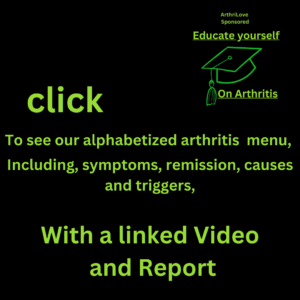
Ehlers-Danlos Syndrome: Number 52 on the list of 100 types of Arthritis
The Fascinating World of Ehlers-Danlos Syndrome: More Than Skin Deep
Ah, the human body—a marvel of engineering, but sometimes, it throws us a curveball that leaves us scratching our heads. One such curveball is Ehlers-Danlos Syndrome (EDS). Let’s embark on a journey to unravel this complex condition, blending science with a touch of wit and a dash of hope.
 What is Ehlers-Danlos Syndrome (EDS)?
What is Ehlers-Danlos Syndrome (EDS)?
Imagine your body’s collagen—the glue that holds you together—deciding to take an extended coffee break. That’s EDS in a nutshell. It’s a group of genetic disorders that affect the connective tissues in your body, primarily collagen, resulting in hypermobility (flexibility beyond your wildest dreams) and skin that’s stretchier than a rubber band.
Causes and Triggers: The Genetics Game
Now, onto the nitty-gritty—what causes this fascinating yet challenging condition? EDS is often a genetic roll of the dice, with specific gene mutations affecting collagen production or structure. Sometimes, these mutations occur spontaneously, surprising us like that unexpected plot twist in a good novel.
Symptoms: Flexibility Plus
One of the hallmark signs of EDS is hypermobility—think of those contortionists at the circus, but without the spangly leotards. This flexibility can be both a blessing and a curse, leading to joint instability, frequent dislocations, and a limited range of motion that can put a damper on daily activities.
Age of Onset: From Childhood to Adulthood
EDS can make its debut at various stages of life, from childhood to adulthood. Many individuals notice symptoms during adolescence when they become more active or during periods of rapid growth. However, EDS doesn’t discriminate—it can show up fashionably late in adulthood too, surprising even the most seasoned individuals.
Quality of Life: Proactive Steps for Positivity
Now, onto the million-dollar question—can you thrive with EDS? Absolutely! A proactive approach is key. Gentle exercise, physical therapy to strengthen those wobbly joints, and mindfulness techniques to manage pain and stress can significantly improve quality of life.
Complications: The Rollercoaster Ride
Like any good rollercoaster, EDS comes with its share of ups and downs. Chronic pain, joint dislocations, and fatigue can be unwelcome passengers. However, with proper management and support, these complications can be minimized, allowing individuals with EDS to lead fulfilling lives.
 All-Natural Breakthroughs: Finding Balance
All-Natural Breakthroughs: Finding Balance
While EDS doesn’t have a magic cure, natural therapies like acupuncture, yoga, and dietary changes (hello, anti-inflammatory foods!) may offer relief from symptoms. These approaches work in harmony with the body, promoting overall wellness without relying solely on medications.
Common Ages and Gender Distribution
EDS can strike at any age, but it often becomes noticeable during adolescence. As for gender, it affects individuals of all sexes, though certain types of EDS may be more prevalent in women.
Interconnected Conditions: The Web of Health
EDS isn’t an island—it’s part of a larger health network. Individuals with EDS may be at risk for related conditions like dysautonomia (the autonomic nervous system going haywire), gastrointestinal issues, and anxiety disorders. Understanding these connections empowers individuals to address their health comprehensively.
In conclusion, Ehlers-Danlos Syndrome is a multifaceted condition that requires a holistic approach to management. With resilience, humor, and a bit of scientific know-how, individuals with EDS can navigate life’s twists and turns, embracing each day with strength and determination. After all, life’s challenges are what make us uniquely human.